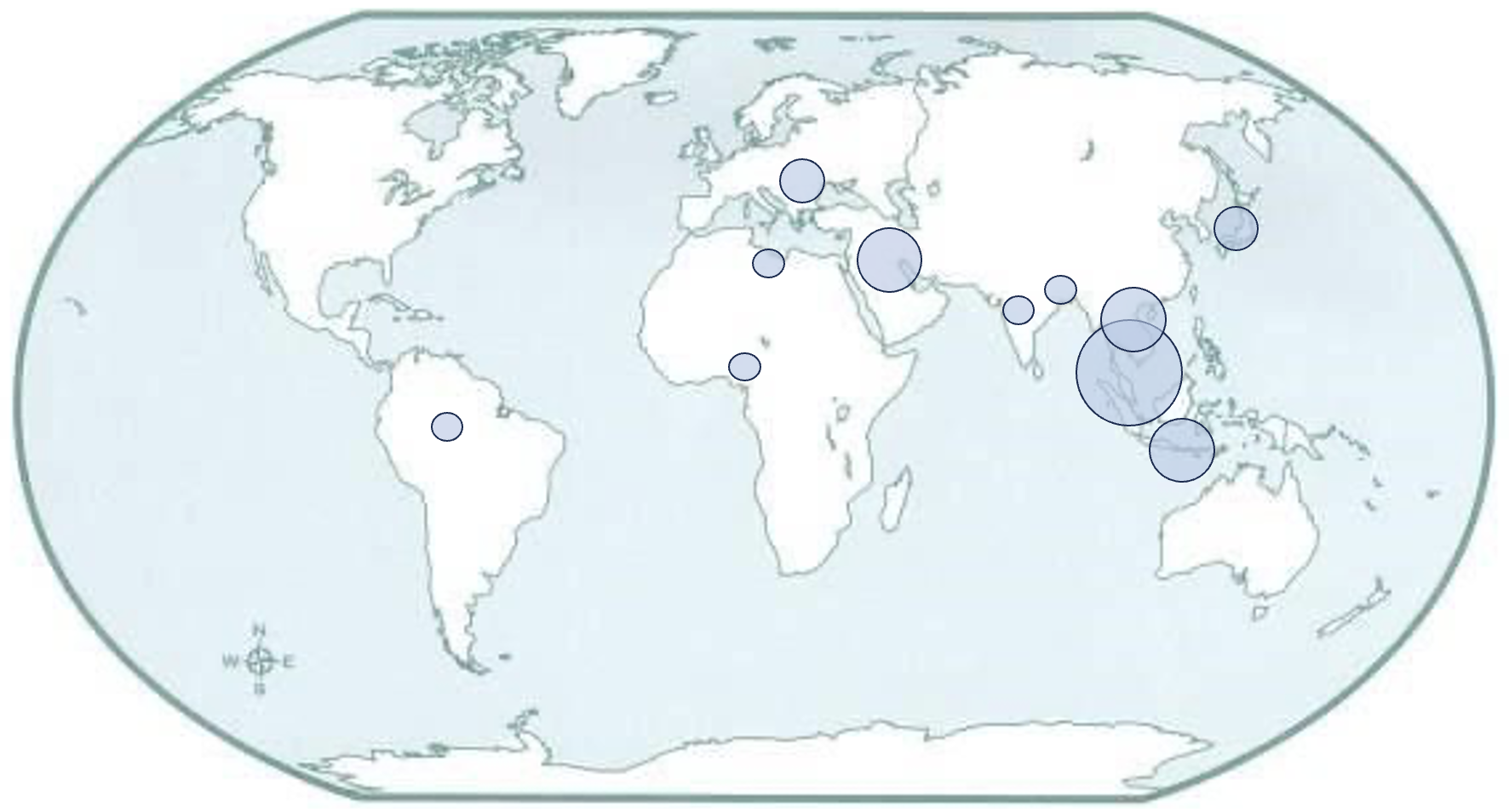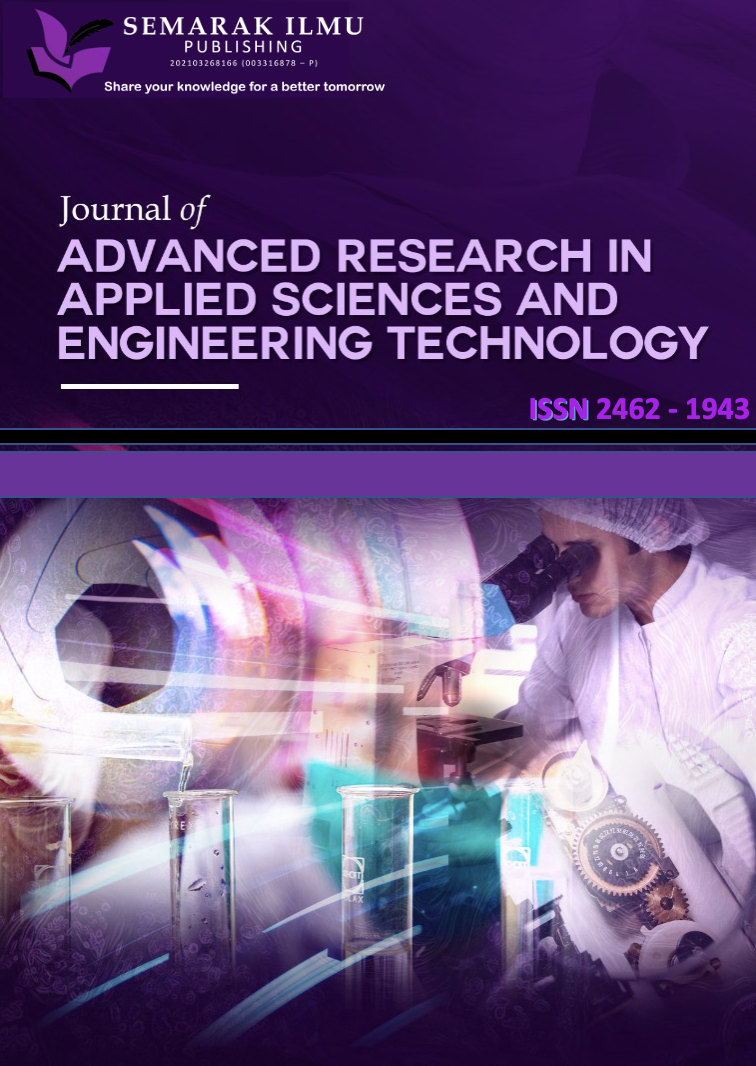Electrospray Dynamics: Investigating the Impact of Voltage and Ionization Ring Parameters on Taylor Cone Characteristics
DOI:
https://doi.org/10.37934/armne.25.1.5265Keywords:
Electrospray, droplet, Taylor cone, ring ionizationAbstract
Electrospray is a method used to create droplets from a liquid sample by providing a strong electric field, which are formed by splitting the liquid droplet into charged droplets. The characteristics of the electrospray are influenced by voltage, distance and inner diameter of ionization ring (IDIR). Thus, this paper focuses on the effects of range of voltage, ranges of inner diameter of ionization ring (IDIR) and position of ionization ring (IR). The electrospray was generated by a high voltage generator and syringe pump. By varying the output voltage within 4kV to 10kV, IDIR (10.3 mm, 15.3 mm and 21.2 mm) and distance of 5mm needle to the IR, the generation of Taylor cone were explored. Then, a digital microscope camera was used to capture the phenomenon. The results were evaluated based on the angle generated by the Taylor cone. The results show that the Taylor cone starts to develop at the voltage of 4 kV regardless of the position and IDIR. And at certain voltage the angle of the Taylor cone starts to become constant. This paper offers an initial understanding of the electrospray characters that has potential for vast applications. However, further analysis and experimentation on the factors that affect the character of Taylor cone is needed in optimizing this technique.
Downloads

























